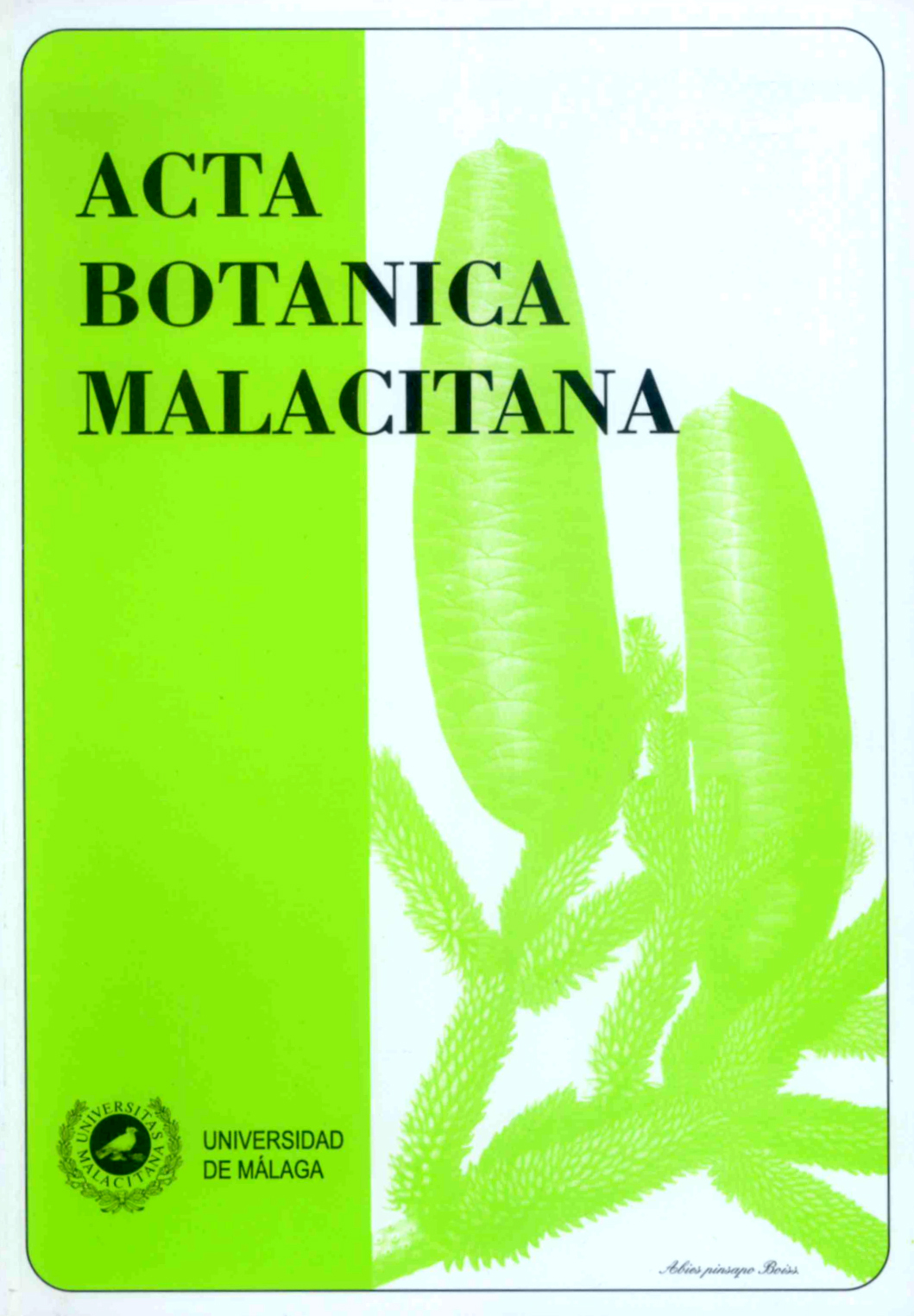Analyse comparative de la tolérance à la salinité du gamétophyte mâle et du sporophyte chez Medicago au stade germination. Comparative analysis of salinity tolerance of the male gametophyte and the sporophyte in Medicago at the germination stage
DOI:
https://doi.org/10.24310/abm.v37i0.2655Abstract
Français. De nombreuses études ont montré une corrélation positive entre les réponses du pollen et de celles du sporophyte à un ensemble de stress. Une étude comparative de la tolérance à la salinité du gamétophyte mâle et du sporophyte au stade germination, a été effectuée sur six écotypes d’espèces annuelles du genre Medicago. A été mesuré, au stade sporophytique, le taux de germination des graines, au stade gamétophytique, le taux de germination du pollen après application d’un stress salin à différentes concentrations de NaCl (0 ; 68 ; 102 et 137 mM). L’analyse des données relatives au sporophyte et au gamétophyte montre que les six écotypes diffèrent significativement entre eux en absence et en présence de stress pour le taux de germination. Le génotype Tru 42 de l’espèce M. truncatula a montré une meilleure capacité germinative, apparaît comme le plus tolérant et le génotype Pol 248 de M. polymorpha le moins tolérant. Ces résultats montrent qu’une correspondance entre l’aptitude du sporophyte et celui du gamétophyte pour la tolérance à la salinité, existe chez Medicago, ce qui permet d’envisager la possibilité d’appliquer la sélection au stade gamétophytique, une technique rapide et économique.
English. Many studies have shown a positive correlation between the responses of pollen and those of the sporophyte to a set of stress. A comparative study of the salinity tolerance of the male gametophyte and the sporophyte has been undertaken on six ecotypes of annual species of Medicago. The seed germination rate at sporophytic stage and the pollen germination rate at gametophytic stage have been assessed after stress exposition under different salt concentration of NaCl (0; 68; 102 and 137 mM). The sporophyte and the gametophyte data analysis showed that the six ecotypes differed significantly between themselves with or without stress application for the germination rate. The Tru 42 genotype of M. truncatula showed the best germinatif ability, appeared as the most tolerant and the genotype Pol 248 of M. polymorpha the least tolerant. This result showed the existence of a correspondence between sporophytic and gametophytic aptitude for salt tolerance in Medicago, this allows the possibility to apply gametophytic selection, fast and economical technique.
Downloads
Metrics
Downloads
Published
How to Cite
Issue
Section
License
All information related to the licensing of published works in Acta Botanica Malacitana and copyright can be found in our Editorial Policy.







1.png)
